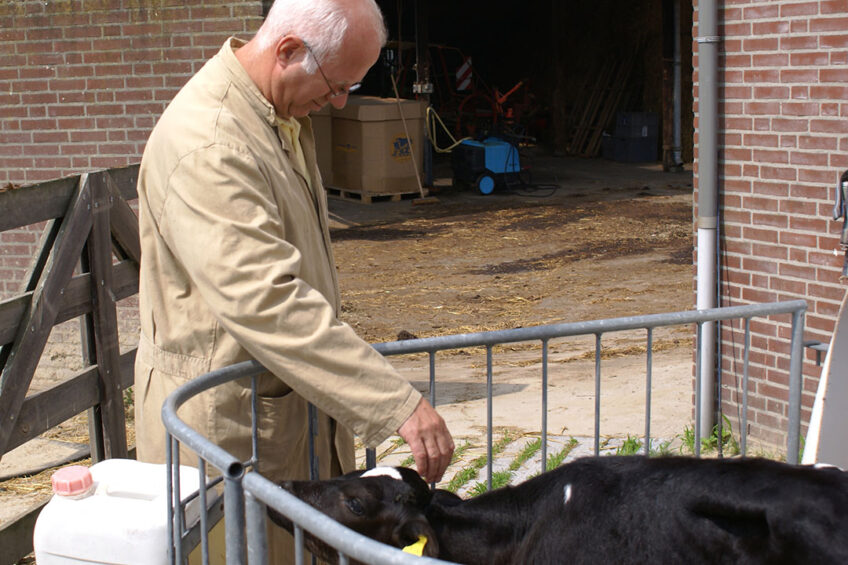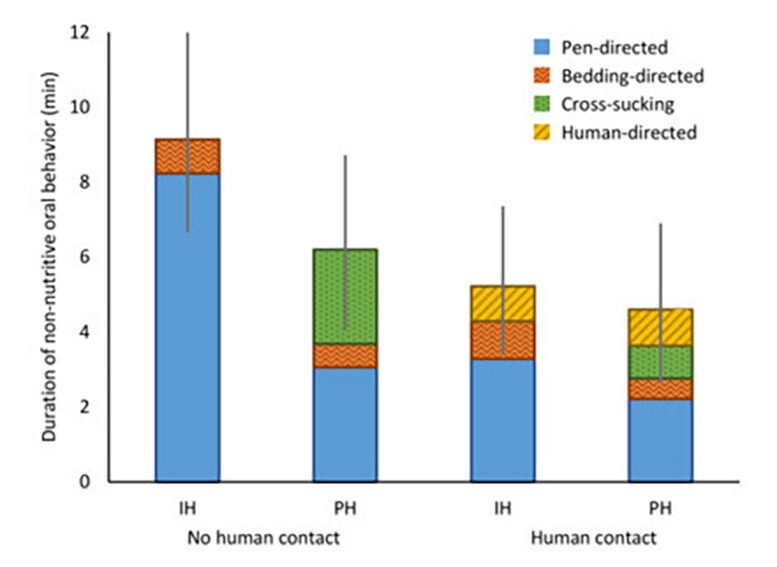Human contact enrichment improves dairy calf welfare

Researchers from the University of Florida demonstrated that socialisation with other calves and a human touch – even for as little as 5 minutes at a time – can improve the welfare of dairy calves.
Research shows dairy calves are active around the time of milk feeding and often perform non-nutritive oral behaviours, particularly during weaning.
Conventional rearing practices for dairy calves involving routine social isolation and restricted opportunities for natural feeding behaviour have a range of detrimental effects on behavioural development. A common concern is the extensive performance of abnormal oral behaviour in dairy calves, including pen-directed sucking and oral manipulation, and cross-sucking in socially housed calves that could compromise calf welfare.
Considering the human involvement in rearing calves on conventional dairy farms, human-animal relationships may be an important component of the dairy calf’s early environment with implications on behavioural development.
Generally, cattle are highly motivated to seek out grooming substrates, with calves known to often seek out human contact; it can be speculated that calves may find humans mimicking allogrooming rewarding.
Gentle human handling is reported to have various positive effects on young calves, including reduced reactivity to human presence and improved ease of handling. Previous studies show that when veal calves are provided with positive human contact following milk meals display fewer avoidance behaviours, are easier to transport, and experience reduced stress. However, the welfare of dairy calves is sometimes neglected in efforts to decrease the costs of calf rearing.
Providing human contact
In this study, researchers evaluated the interactive effects of social housing and human contact following feeding, including scratching to mimic brushing or allogrooming, on post-feeding non-nutritive oral behaviours and rest, during the beginning of the weaning period. Calf well-being during the weaning stage is of huge importance to the dairy industry, as non-nutritive oral behaviours in dairy calves typically increase during weaning.
This study consisted of individually housed Holstein dairy calves and pair-housed calves. Human contact was provided in the form of scratching calves beneath the neck to mimic allogrooming. The human was present for 5 minutes within the 15-min window following morning milk feeding. Behaviour was recorded continuously from video for 1 hour following milk feeding.
Impact of human contact
The results (Figure 1) showed that calves housed individually performed more pen-directed sucking when they did not receive human contact following feeding compared to pair-housed calves, but human contact reduced the duration of pen-directed non-nutritive oral behaviours to a level that did not differ from the pair-housed calves.

Pen-directed oral manipulation, usually taking the form of tongue movement with the mouth over a pen bar, was the most prevalent form of non-nutritive oral behaviour. In general, there was an overall effect of human contact in reducing the total duration of non-nutritive oral behaviour, irrespective of the housing system; in pair-housed calves, the duration of cross-sucking was reduced when they received human contact.
In terms of resting time, calves spent more time lying down in the hour following feeding when they received human contact, irrespective of the housing system. And, in contrast, bedding-directed non-nutritive oral behaviour (typically licking or ingesting bedding material) occurred to a lesser extent and was not affected by the housing system or human contact, possibly suggesting that it is differently motivated from pen-directed oral manipulation. Another observation was self-grooming, which was not affected by either human contact or the housing system.
“These results suggest that the effect of human contact in reducing non-nutritive oral behaviour was largely driven by the reduction in pen-directed sucking in individually housed calves, whereas the reduction in cross-sucking in pair-housed calves was partly due to redirected behaviour toward human-directed non-nutritive oral behaviour,” the researchers concluded.
Influence of housing systems
Researchers of the current study emphasised the results support the role of restrictive housing environments in the expression of abnormal oral behaviours, highlighting a need to consider more complex or naturalistic approaches to rearing dairy calves.
Interestingly, a similar study published in the PLOS ONE journal evaluated anticipatory behaviour towards a reward as an indicator of the welfare of dairy calves in different housing environments and found that the emotional state of calves is affected by their housing conditions and emphasised the importance of housing quality for calf welfare.
The researchers stated: “Our findings suggest that calves housed in enrichment-restricted conditions may be more sensitive to the presentation of rewards and changes in reward quality, indicating a more negative emotional state compared to calves in an enriched environment.”
The researchers also encouraged future work to understand the aspects of housing conditions that contribute to differences in emotional states.
It is known that in farms that practice single housing, calves are reared individually in pens or hutches usually for 2-8 weeks, mainly with the aim of decreasing the risk of horizontal disease transmission and helping farmers monitor calf milk intake and health.
However, several studies highlight the downside of individual housing on the welfare of calves. On the other hand, the association between group housing and morbidity is affected by the size of the group, with calves kept in large groups being at higher risk of disease. A trade-off between single housing and group housing is pair housing, where physical contact is limited to only 1 other calf, and the risk of pathogen transmission is limited.
Conclusion
The researchers concluded that non-nutritive oral behaviours in dairy calves occur largely surrounding meals and are influenced by housing systems and human interaction, among other possibilities.
“It is also possible that our observed effects may depend on the novelty of the human contact provided, as this was a short-term study focused specifically on the weaning period. Future work might explore the effects of more recurring management strategies involving different levels of human presence surrounding milk feeding,” they said.
They added that while routine, prolonged human interaction is unlikely to be feasible in most dairies, these results suggest that even brief human contact surrounding milk feedings may be beneficial in reducing the non-nutritive oral behaviour of calves and improving their welfare.
Join 13,000+ subscribers
Subscribe to our newsletter to stay updated about all the need-to-know content in the dairy sector, two times a week.










